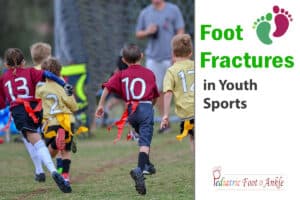Early Detection of Foot Conditions in Children
Your child’s feet are a remarkable example of natural engineering, guiding them from their tentative first steps to the energetic leaps and bounds of later childhood. However, like any intricate system, various issues can arise. That is why it is crucial to diagnose and treat pediatric foot conditions as early as possible. In this article, we will delve into the significance of early diagnosis and provide guidance on recognizing the signs and symptoms that parents should be vigilant about.
Why Early Diagnosis Matters
Children’s feet are constantly growing and changing. This growth means that conditions can potentially self-correct over time, but it also means that small problems can rapidly become big ones if left unaddressed. In addition, a child’s developing foot is more flexible and resilient than an adult’s, which often allows for more effective treatment.
Moreover, many pediatric foot conditions, if left untreated, can cause long-term complications. Conditions like flat feet, in-toeing, and toe walking might seem relatively harmless, but they can lead to more serious problems such as joint pain, difficulty walking, and even spine and posture issues. The sooner these conditions are diagnosed and treated, the less likely they are to cause problems in adulthood.
Signs and Symptoms to Look Out For
Children aren’t always able to articulate what they’re feeling, so it’s crucial for parents to be observant and proactive. Here are some signs that your child might have a foot condition:
- Limping or altered gait: If your child is limping or walking differently, it could be a sign of foot pain or discomfort.
- Avoidance of activities they usually enjoy: If your child is suddenly less enthusiastic about activities they normally enjoy, like running, jumping, or sports, it might be because of foot pain or discomfort.
- Complaints of pain: If your child complains about foot pain, it’s essential to take them seriously and seek a professional opinion. Remember, pain is the body’s way of signaling that something isn’t right.
- Visible deformities: Any noticeable changes in the shape or alignment of your child’s feet, such as bunions or flat feet, should be examined by a professional.
- Difficulty keeping up with peers: If your child seems to tire more quickly than their peers or has trouble keeping up during physical activities, it might be a sign of a foot condition.
Don’t Hesitate to Contact us
If your child is experiencing any of the symptoms discussed in this article, don’t hesitate to schedule an appointment or call our office at (480) 534-7220. The health of your child’s feet now can significantly impact their quality of life both now and in the future.
Remember, your child’s feet are designed for life. Let’s make sure they have a strong foundation.







